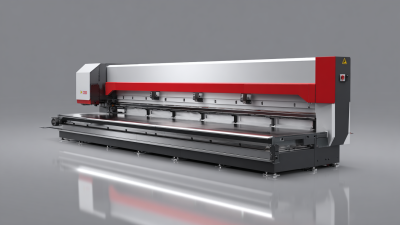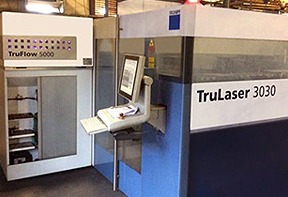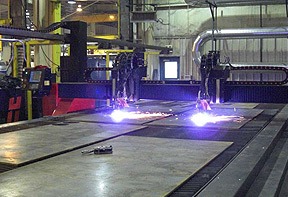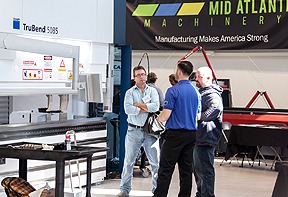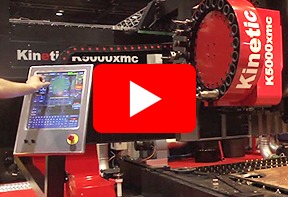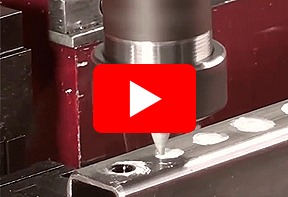Ultimate Checklist for Choosing the Right CNC Press Brake for Your Business
In today's manufacturing landscape, the demand for precision and efficiency has never been higher, particularly in the metalworking sector where CNC press brakes play a pivotal role. According to a report by Grand View Research, the global CNC press brake market is projected to reach $4.38 billion by 2025, driven by advancements in automation and the increasing need for customized metal fabrication. Choosing the right CNC press brake for your business is crucial, as it directly impacts production quality and operational costs. The benefits of selecting an appropriate model extend beyond mere functionality; they include improved accuracy, enhanced productivity, and greater flexibility in manufacturing processes.

With various types of CNC press brakes available, understanding their unique advantages can empower businesses to make informed decisions that align with their specific operational requirements and growth objectives.
Key Factors to Consider When Selecting a CNC Press Brake for High-Volume Production
 When selecting a CNC press brake for high-volume production, several key factors must be considered to ensure optimal performance and efficiency. First and foremost, the machine's bending capacity should align with the specific requirements of your business. According to industry reports, CNC press brakes with capacities ranging from 40 to 200 tons are commonly used in high-volume applications, providing a balance between strength and flexibility. Additionally, the working length is critical; most efficient operations require a press brake that can handle materials up to 3 meters in length, facilitating larger workpieces without the need for multiple setups.
When selecting a CNC press brake for high-volume production, several key factors must be considered to ensure optimal performance and efficiency. First and foremost, the machine's bending capacity should align with the specific requirements of your business. According to industry reports, CNC press brakes with capacities ranging from 40 to 200 tons are commonly used in high-volume applications, providing a balance between strength and flexibility. Additionally, the working length is critical; most efficient operations require a press brake that can handle materials up to 3 meters in length, facilitating larger workpieces without the need for multiple setups.
Another essential factor is the machine's technology and control system. Modern CNC press brakes equipped with advanced programming features and user-friendly interfaces allow for quicker changeovers and reduced setup times. A study noted that businesses that adopted state-of-the-art CNC machinery observed a 20% increase in production efficiency and a decrease in material waste over traditional setups. Furthermore, considering the energy efficiency of the machine can lead to significant cost savings; high-performance CNC press brakes are designed to minimize energy consumption without compromising output. Hence, investment in reliable technology and well-informed specifications can be decisive for long-term success in high-volume manufacturing environments.
Understanding Different CNC Press Brake Types: Hydraulic vs. Electric vs. Mechanical
When selecting a CNC press brake for your business, understanding the different types available is crucial for optimizing your production process.
Hydraulic press brakes have long been the industry standard, celebrated for their robust performance and ability to handle heavy-duty applications. According to a report by SME, hydraulic press brakes account for approximately 60% of the market share due to their reliability in bending thicker materials and higher tonnage capacity.
On the other hand, electric press brakes are gaining traction due to their energy efficiency and precision. According to a study conducted by Technavio, the electric press brake market is projected to grow by 5% annually, driven by advancements in technology that lower operational costs while enhancing accuracy. These machines are particularly noted for their eco-friendliness, consuming up to 30-50% less energy compared to hydraulic counterparts, making them an attractive option for businesses aiming for sustainability.
Lastly, mechanical press brakes, although becoming less common, still hold significance in specific applications. They are ideal for high-speed operations and consistent shallow bends. However, they require more maintenance and are limited by their design compared to hydraulic and electric machines. Understanding these distinctions is vital for businesses to make informed decisions that align with their operational needs and future growth ambitions.
Assessing the Importance of Accuracy and Precision in CNC Press Brake Operations
When selecting a CNC press brake for your business, the emphasis on accuracy and precision cannot be overstated. According to a study by the National Institute of Standards and Technology (NIST), manufacturing errors can cost companies anywhere from 20% to 30% of their total production costs. This staggering statistic highlights the critical role that precision plays in enhancing operational efficiency and reducing waste. A CNC press brake with advanced features, such as adaptive control systems, can achieve tolerances as tight as ±0.005 inches. This level of precision significantly minimizes the risk of error, ensuring that the final components meet exact specifications.
Furthermore, the accuracy of a CNC press brake impacts the overall quality of end products. A report by the Association for Manufacturing Technology indicates that high-precision machinery not only reduces the frequency of part rework but also improves the reliability and lifespan of manufactured goods. Machines that consistently deliver superior accuracy can elevate a brand's reputation, leading to increased customer satisfaction and loyalty. Therefore, investing in a CNC press brake that excels in accuracy and precision is not just a technical decision, but a strategic move that can enhance your competitive advantage in the robust manufacturing landscape.
Evaluating Safety Features and Compliance Standards for CNC Press Brakes in Manufacturing
 When selecting a CNC press brake for your manufacturing operations, evaluating safety features and compliance standards should be at the forefront of your decision-making process. These machines are powerful tools that can pose significant risks if not equipped with the right safety mechanisms. Look for models that include features such as light curtains, emergency stop buttons, and anti-collision sensors. These elements not only protect operators but also help in minimizing downtime caused by accidents.
When selecting a CNC press brake for your manufacturing operations, evaluating safety features and compliance standards should be at the forefront of your decision-making process. These machines are powerful tools that can pose significant risks if not equipped with the right safety mechanisms. Look for models that include features such as light curtains, emergency stop buttons, and anti-collision sensors. These elements not only protect operators but also help in minimizing downtime caused by accidents.
Tip: Always ensure that the CNC press brake meets the relevant safety standards, such as OSHA and ISO regulations. This compliance not only assures the safety of your workforce but also helps avoid potential legal repercussions down the line. Regular training on the operational guidelines and safety protocols is essential, as human errors often lead to accidents in manufacturing environments.
Another key aspect to consider is the integration of technology in safety features. Modern CNC press brakes often come equipped with smart monitoring systems that can detect anomalies in real-time. This technology allows for prompt action before a potential hazard escalates.
Tip: Investing in a machine with advanced safety features may seem costly upfront, but it can save you significant expenses related to workplace injuries and equipment repairs. Prioritizing safety not only improves employee morale but also enhances productivity.
Analyzing Total Cost of Ownership: Beyond Initial Investment in CNC Press Brakes
When selecting a CNC press brake for your business, it’s crucial to look beyond the initial purchase price and analyze the total cost of ownership (TCO). TCO encompasses not only the upfront investment but also ongoing operational costs such as maintenance, energy consumption, and potential downtime. Each of these factors can significantly impact your overall budget and the machine’s long-term value. For instance, a machine with a lower initial cost may require frequent repairs or higher energy inputs, ultimately resulting in greater expenses over time.
Moreover, consider the training and workforce implications involved with the new equipment. The ease of use, reliability, and available support can influence how quickly your team adapts to the CNC press brake. Investing in a model that offers robust training resources and technical assistance may incur a higher initial price, but it can enhance productivity and reduce the risk of costly mistakes. Thus, thorough research on TCO, including hidden costs and potential efficiency gains, will allow businesses to make a more informed decision that aligns with their long-term goals. Balancing these considerations will ensure that your chosen CNC press brake not only fits your immediate needs but also serves your business effectively for years to come.
Ultimate Checklist for Choosing the Right CNC Press Brake for Your Business
| Dimension | Criteria | Importance Score (1-10) | Estimated Annual Maintenance Cost | Energy Consumption (kWh/year) | Operator Training Time (Hours) |
|---|---|---|---|---|---|
| Capacity | Maximum bending force | 9 | $1,000 | 800 | 10 |
| Accuracy | Precision and repeatability | 10 | $800 | 500 | 8 |
| Flexibility | Ease of setup for different jobs | 7 | $600 | 400 | 5 |
| Usability | User-friendly controls | 8 | $700 | 600 | 6 |
| Safety Features | Emergency stop, guards | 9 | $500 | 300 | 4 |





